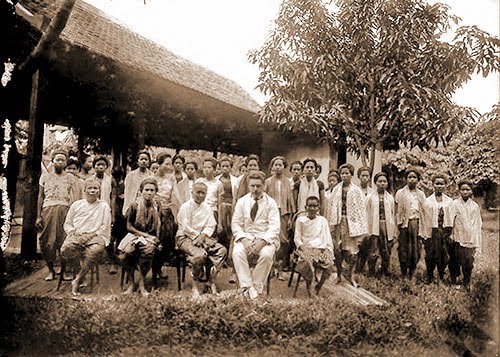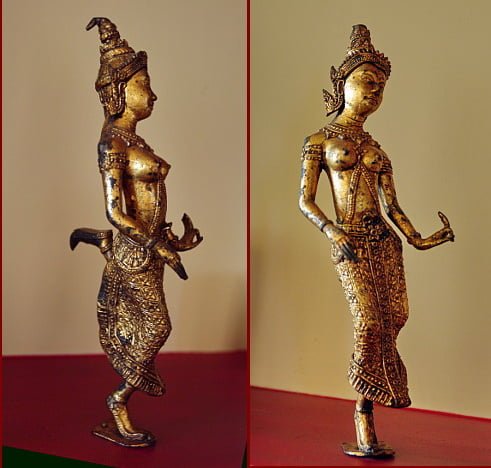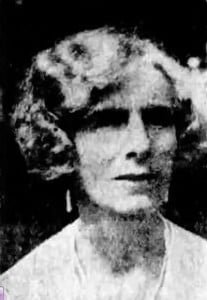Khmer Crafts-George Groslier and the School of Cambodian Arts-Part 2
Born in Phnom Penh in 1887, George Groslier was a French artist, author, architect and historian who devoted his life to the study and revival of the ancient arts of the Khmer civilization. Groslier designed what is today the National Museum of Cambodia, opening the institution on April 13, 1920. Simultaneously, he founded the School of Cambodian Arts to revive the classic crafts of Cambodia. In 1936, English author Miss Harriet Winifred Ponder published Cambodian Glory, including a detailed chapter about George Groslier and the School of Cambodian Arts titled “The Tree of Knowledge.” Excerpts from her article are featured on Devata.org as a four part series (see part 1 here).

Khmer Crafts-George Groslier and the School of Cambodian Arts-Part 2
A visit to the classrooms at Phnom Penh disperses all doubt as to the quality of the seed that is being cultivated. On all sides there is the sure touch, the quiet earnestness and infinite patience that are the hallmark of the Eastern craftsman. Students enter the school at fifteen, starting with a course of drawing; first copying the flowing patterns of the Khmer mouldings, working up by degrees to intricate designs from the infinite variety of medallions on the walls of Angkor Wat and elsewhere.
At the end of three months the students start to learn the technique of their chosen craft: modelling, wood-carving, sculpture, bronze-casting, furniture-making, the art of the goldsmith or silversmith, or (for girls) weaving. The usual period of tuition is two years, at the end of which a leaving certificate is given.

The Art of Weaving in Cambodia
The ancient art of weaving has lived on more robustly in Cambodia than the other arts, no doubt owing to the need to supply the bonzes with their coarse cotton robes and the people with their simple garments. But at Phnom Penh there is now being fostered the creation of the same gorgeous fabrics as those worn by the great Cambodian kings and nobles.
A Cambodian lady acts as instructress, and is to be seen every day at her hand-loom, on which the lovely patterns in their mellow colourings seem to grow like flowers under her magic touch. At the other looms in the same room her pupils (who also, to ignorant Western eyes, seem very expert) work on less difficult designs. A small-size sampot, on the loom of the mistress of her craft, takes about a fortnight in the making.
Admirable work is done by the carvers and sculptors. An ‘exhibition piece’ in the shape of a tall chest, covered with intricately carved copies of Angkorian designs, occupies a well-deserved place of honour in their workshop; side by side with the lace-like delicacy of miniature objects chiselled with tiny tools on wood highly polished as a billiard-ball.
Metal Casting at the School of Cambodian Arts
Perhaps the most interesting of the arts that are being revived in these remarkable studios is that of making the exquisite little bronzes—some of them copies of treasures found buried, or dredged up from the bed of the River Mekong-and others taken from figures on the bas-reliefs; a collection of these forms a delightful little exhibition of its own in a special department of the museum, with the added charm to the visitor that everything in it is for sale.
Their creators never so much as glance up from their task, if a stranger stops beside them to watch some dainty little figure, measuring perhaps three or four inches from top to toe, being modelled in black wax from which the cast will presently be taken to receive the bronze of the final stage.

Some of these fairy dancing figures, with their fine-pointed head-dress, their bracelets and ornaments, their lotus-buds and back-curving slender fingers, exact facsimiles in miniature of the Apsaras of the Angkor carvings and of the living Cambodian dancers of today, take more than three months to finish; and they may be bought from the collection exhibited at the museum, or any desired design will be copied for you to order, and posted free of all Customs complications to any part of the world, for the absurd sum of three or four piastres upward.
Besides the dancers, there is the Buddha seated in meditation on the coils of Naga-Raja, with the serpent’s seven heads spread protectingly behind him; there is Ganesha, the Elephant God, son of Siva, in a jewelled head-dress, or ‘mukuta’, holding his trunk in one hand; there are Garudas and Rakshas and Nagas, bearded heads of Siva, and multiple-armed gods from the Brahman pantheon, and bronze vessels and ornaments—all executed with a skill of which the Angkor craftsmen would surely have had no need to be ashamed.
The same may be said of the silver and goldwork, which also is copied from ancient models; the deeply cut designs, which have almost the effect of very fine carving, are executed by pressing the soft metal with a pointed tool into a bed of wax which is afterwards removed. The beautiful little goblets and vessels and boxes thus made are also to be bought at ridiculously low prices. It can surely be only the modest failure of the Corporations Cambodgiennes to advertise themselves, that prevents the products of these recreated arts from having a world-wide fame, and a demand that might do much to stimulate the life of the arts themselves.
About the Author

Harriet Winifred Ponder was born in England in 1883, living in Buckinghamshire. She was a close friend of opera singer Clare Butt, whose autobiography she published in 1928. Like American adventuress Helen Churchill Candee, Miss Ponder traveled extensively in Southeast Asia and the South Pacific, authoring four important books about Cambodia and Java. In recognition of her original research work, and her contributions to geographical knowledge, Miss Ponder became a Fellow of the Royal Geographical Society, London. She adopted Australia as her second home and died in Brisbane in 1967.
The Works of Harriet Winifred Ponder
1926. An idler in the islands. 14 illust.
1928. Clara Butt, her life-story. London: G.G. Harrap.
1936. Cambodian glory; the mystery of the deserted Khmer cities and their vanished splendour; and a description of life in Cambodia today. London: Thornton Butterworth, Ltd.
1934. Java pageant; a description of one of the world’s richest, most beautiful, yet little known islands of the world & the strange customs & beliefs, the industries, religions & wars of its fascinating people. London: Seeley, Service & Co.
1942. Javanese panorama; a further account of the world’s richest island, with some intimate pictures of life among the people of its lesser known regions. London: Seeley, Service & Co.
1944. In Javanese waters; some sidelights on a few of the countless, lovely, little known islands scattered over the Banda sea & some glimpses of their strange & stormy history. London: Seeley, Service & Co. Ltd.
